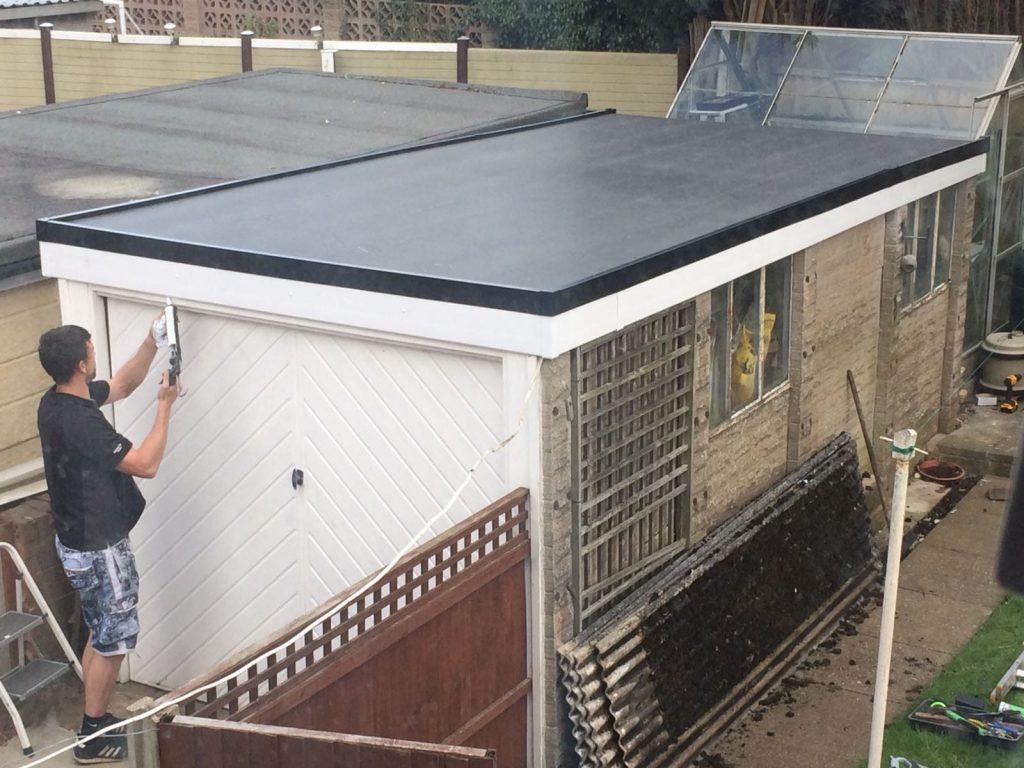When installing a flat roof, a key part of the process is the finishing and sealing of the roof to ensure that it is fully waterproof and able to protect the property from bad weather. There are several options to choose from when finishing your flat roof, with some of the most popular being felt, asphalt, and rubber roofing (also known as Ethylene Propylene Diene Monomer, or EPDM for short).
Of these three roofing materials, rubber roofing is easily the most effective and reliable, particularly when sourced from a high-quality manufacturer like Firestone. In this article, we’re going to take a look at the advantages of rubber roofing compared to felt and asphalt:
Greater Durability
If fitted correctly by trained professionals, rubber roofing lasts significantly longer than other flat roof finishes. It offers greater wear and weather resistance, which means it will last for decades—up to 50 years with the right care and attention. This ensures a great return on investment compared to asphalt roofs, which tend to last around 25 years, and felt roofs, which can last as little as 10 years
Easier Installation
EPDM rubber roofing is manufactured as sheets and applied to your roof deck with a strong and resilient adhesive. The sheet is then smoothed out to remove any lumps, creases, or air pockets. Compared to felt roofing, which requires multiple layers to achieve the same level of protection, or asphalt roofing, which needs to be applied with a blowtorch, rubber roofing is much quicker and easier to install, saving time and labour costs.
Improved Flexibility
Rubber is a naturally stretchy material that can expand and contract in reaction to fluctuations in temperature without peeling or cracking. While asphalt roofing also performs well in this area, it will deteriorate quicker over time, especially if subjected to frequent temperature changes. Felt roofing suffers from even worse flexibility, which may explain its poor durability.
Lower Maintenance
Because rubber roofing is so durable, it requires little in the way of maintenance. Both asphalt and felt roofs need regular repairs, patching, or recoating to keep a waterproof seal. In comparison, rubber roofing can be left to its own devices. We recommend checking it for signs of damage or wear every year as part of your general building maintenance routine. If you need to clean it, you can do so with soap and water.
Better for the Environment
We are all trying to do our part to limit our impact on the environment, and rubber roofing is the most eco-friendly of these three solutions. Not only is it made from recycled materials, but rubber can prevent heat loss through the roof in the winter months and reflect heat from the sun during the summer. This helps maintain a comfortable temperature in your building and can reduce your energy costs for heating or cooling the property.
Why Rubber Roofing is Better than Felt or Asphalt for Flat Roofs: Final Thoughts
Here at Rooftop Systems, we specialise in rubber roofing solutions for flat roofs, using materials of the highest quality from Firestone. Our team of trained and experienced roofers covers a 50-mile radius around our office in Stoke-on-Trent, taking in the whole of Staffordshire and much of the surrounding area, including Cheshire, Shropshire, and Derbyshire. For EPDM rubber roofing solutions you can trust, call the team today on 01782 938282 or send an email to info@rooftopsystems.co.uk to have someone call you back.

